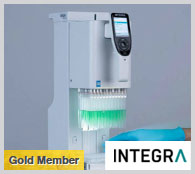Biomarkers Diagnose Bacteremia in Bone and Joint Infections
By LabMedica International staff writers
Posted on 10 Apr 2013
Several biomarkers routinely measured in clinical laboratories have been studied as tools of detection of bacteremia in childhood infectious diseases.Posted on 10 Apr 2013
Blood C-reactive protein (CRP), erythrocyte sedimentation rate (ESR) and white blood cell count (WBC) are widely used laboratory indices in acute childhood bone and joint infection and high serum alkaline phosphatase (ALP) levels are measured in septic conditions.
Scientists at the University of Turku (Finland) carried out a prospective and randomized study on 265 children at age 3 months to 15 years with a culture-positive bone or joint infection. Blood samples were collected during the hospitalization, CRP, ESR, and WBC and ALP were measured on admission from all patients, analyzed immediately and the results computerized. The predictive value to detect bacteremia was assessed for each of these four indices.
A cut-off value of 20 mg/L was used for CRP, 20 mm/h for ESR and 15,000/mm3 for WBC. In all, 157 children (59%) showed bacteremia. Staphylococcus aureus was the most common causative agent (75%) followed by Haemophilus influenzae Type B (10%), Streptococcus pyogenes (9%), and Streptococcus pneumoniae (5%).
The initial CRP value was significantly higher in children with bacteremia at 93 mg/L compared with those whose blood cultures remained negative, whose mean CRP value was 77 mg/L. The difference in ESR of bacteremia at 53 mm/H versus nonbacteremia at 47 mm/H was nonsignificant. WBC was significantly lower among bacteraemic patients at 11,900/mm3 compared to13,800/mm3 in those whose blood culture was negative.
The authors concluded that CRP performed better than ESR, WBC or ALP in the detection of bacteremia in acute osteoarticular infections of childhood. CRP is not completely sensitive or specific for bacteremia, but a high CRP value on admission should alert the clinician of the possibility and of the danger of pending sepsis. The article was published in the February 2013 issue of the Journal of Paediatrics and Child Health.
Related Links:
University of Turku









 assay.jpg)




